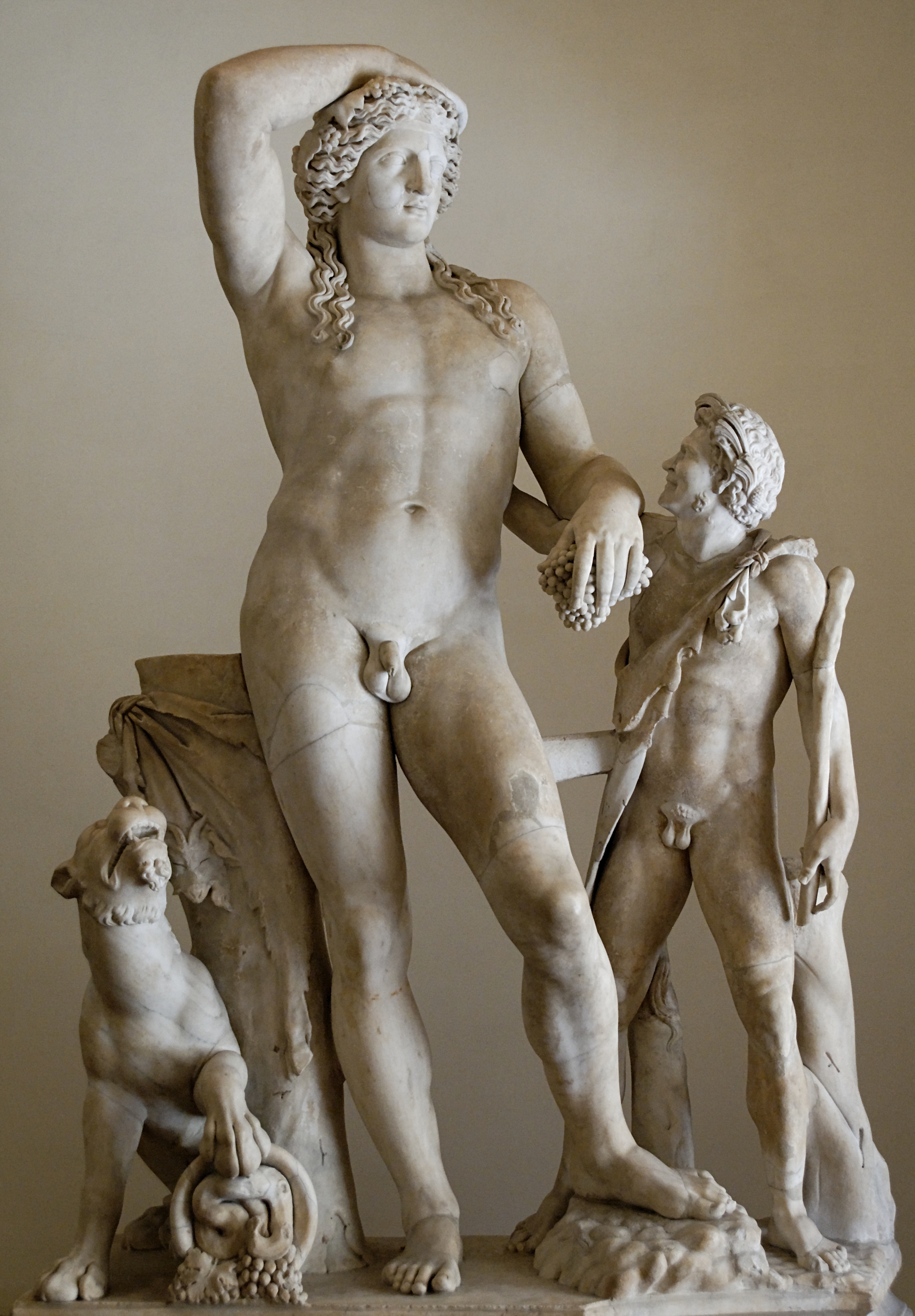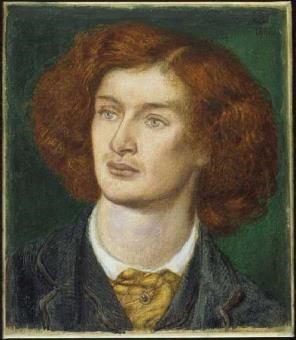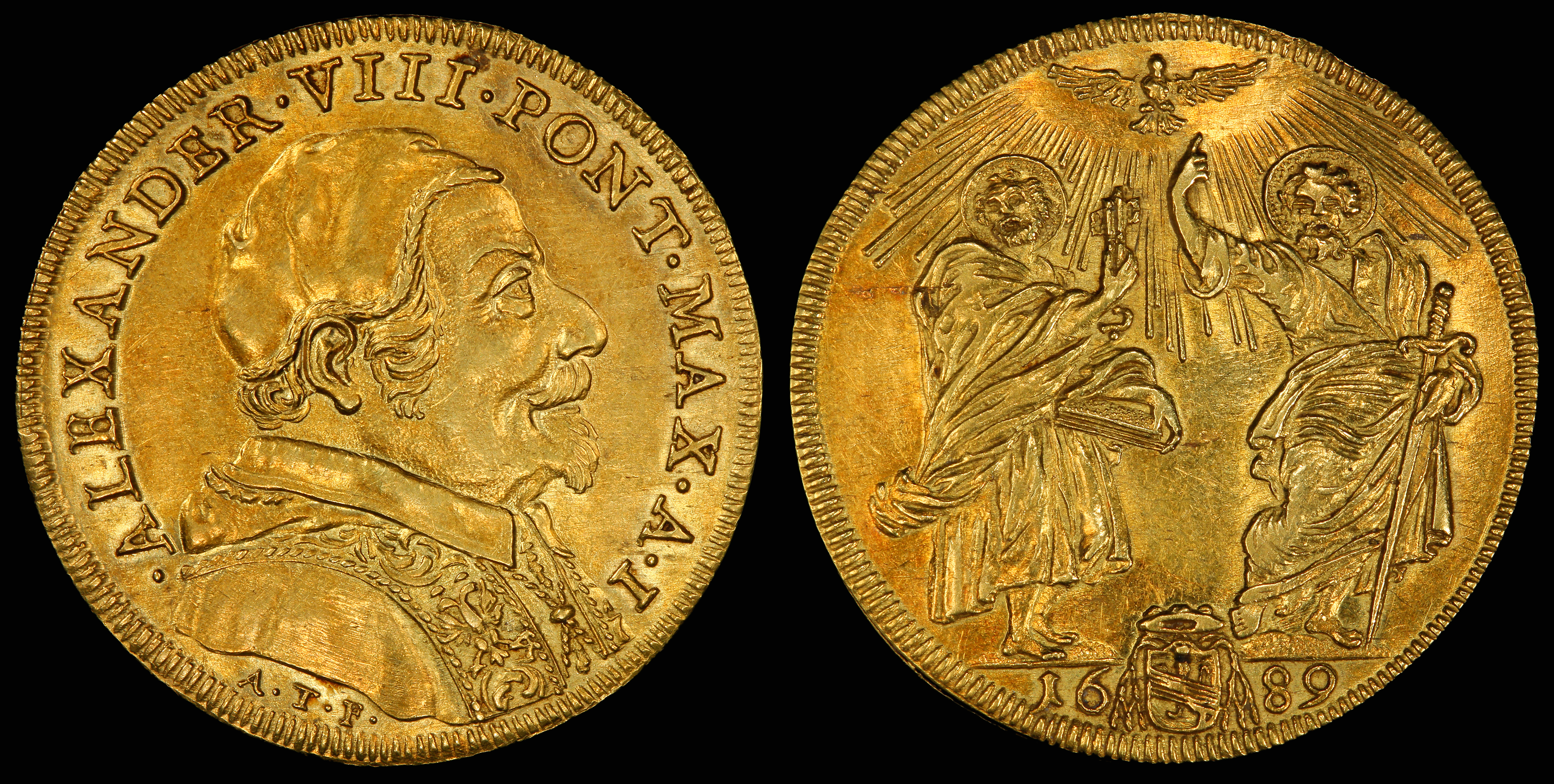|
Borghese Hermaphroditus
The ''Sleeping Hermaphroditus'' is an ancient marble sculpture depicting Hermaphroditus life size. In 1620, Italian artist Gian Lorenzo Bernini sculpted the mattress upon which the statue now lies. The form is partly derived from ancient portrayals of Venus and other female nudes, and partly from contemporaneous feminised Hellenistic portrayals of Dionysus/Bacchus. It represents a subject that was much repeated in Hellenistic times and in ancient Rome, to judge from the number of versions that have survived. Discovered at Santa Maria della Vittoria, Rome, the ''Sleeping Hermaphroditus'' was immediately claimed by Cardinal Scipione Borghese and became part of the Borghese Collection. The "Borghese Hermaphroditus" was later sold to the occupying French and was moved to The Louvre, where it is on display. The ''Sleeping Hermaphroditus'' has been described as a good early Imperial Roman copy of a bronze original by the later of the two Hellenistic sculptors named Polycles (working ... [...More Info...] [...Related Items...] OR: [Wikipedia] [Google] [Baidu] |
Gian Lorenzo Bernini
Gian Lorenzo (or Gianlorenzo) Bernini (, , ; Italian Giovanni Lorenzo; 7 December 159828 November 1680) was an Italian sculptor and architect. While a major figure in the world of architecture, he was more prominently the leading sculptor of his age, credited with creating the Baroque style of sculpture. As one scholar has commented, "What Shakespeare is to drama, Bernini may be to sculpture: the first pan-European sculptor whose name is instantaneously identifiable with a particular manner and vision, and whose influence was inordinately powerful ..." In addition, he was a painter (mostly small canvases in oil) and a man of the theater: he wrote, directed and acted in plays (mostly Carnival satires), for which he designed stage sets and theatrical machinery. He produced designs as well for a wide variety of decorative art objects including lamps, tables, mirrors, and even coaches. As an architect and city planner, he designed secular buildings, churches, chapels, and publi ... [...More Info...] [...Related Items...] OR: [Wikipedia] [Google] [Baidu] |
Gardens Of Sallust
The Gardens of Sallust ( la, Horti Sallustiani) was an ancient Roman estate including a landscaped pleasure garden developed by the historian Sallust in the 1st century BC. It occupied a large area in the northeastern sector of Rome, in what would become Region VI, between the Pincian and Quirinal hills, near the Via Salaria and later Porta Salaria. The modern rione is now known as Sallustiano. History The horti in ancient Rome Lucullus started the fashion of building luxurious garden-palaces in the 1st century BC with the construction of his gardens (''horti'') on the Pincian Hill. The ''horti'' were a place of pleasure, almost a small palace, and offered the rich owner and his court the possibility of living in isolation, away from the hectic life of the city but close to it. The most important part of the ''horti'' was undoubtedly the planting, very often as topiary in geometric or animal shapes. Among the greenery there were often pavilions, arcades for walking away from ... [...More Info...] [...Related Items...] OR: [Wikipedia] [Google] [Baidu] |
Hermaphrodite MET DT10047
In reproductive biology, a hermaphrodite () is an organism that has both kinds of reproductive organs and can produce both gametes associated with male and female sexes. Many taxonomic groups of animals (mostly invertebrates) do not have separate sexes. In these groups, hermaphroditism is a normal condition, enabling a form of sexual reproduction in which either partner can act as the female or male. For example, the great majority of tunicates, pulmonate molluscs, opisthobranch, earthworms, and slugs are hermaphrodites. Hermaphroditism is also found in some fish species and to a lesser degree in other vertebrates. Most plants are also hermaphrodites. Animal species having different sexes, male and female, are called gonochoric, which is the opposite of hermaphrodite. There are also species where hermaphrodites exist alongside males (called androdioecy) or alongside females (called gynodioecy), or all three exist in the same species (called trioecy); these three systems a ... [...More Info...] [...Related Items...] OR: [Wikipedia] [Google] [Baidu] |
Hermitage Museum
The State Hermitage Museum ( rus, Государственный Эрмитаж, r=Gosudarstvennyj Ermitaž, p=ɡəsʊˈdarstvʲɪn(ː)ɨj ɪrmʲɪˈtaʂ, links=no) is a museum of art and culture in Saint Petersburg, Russia. It is the list of largest art museums, largest art museum in the world by Art gallery, gallery space. It was founded in 1764 when Empress Catherine the Great acquired an impressive collection of paintings from the Berlin merchant Johann Ernst Gotzkowsky. The museum celebrates the anniversary of its founding each year on 7 December, Saint Catherine's Day. It has been open to the public since 1852. The ''Art Newspaper'' ranked the museum 6th in their list of the List of most visited art museums, most visited art museums, with 1,649,443 visitors in 2021. Its collections, of which only a small part is on permanent display, comprise over three million items (the numismatics, numismatic collection accounts for about one-third of them). The collections occupy a l ... [...More Info...] [...Related Items...] OR: [Wikipedia] [Google] [Baidu] |
Vatican Museums
The Vatican Museums ( it, Musei Vaticani; la, Musea Vaticana) are the public museums of the Vatican City. They display works from the immense collection amassed by the Catholic Church and the papacy throughout the centuries, including several of the most well-known Roman sculptures and most important masterpieces of Renaissance art in the world. The museums contain roughly 70,000 works, of which 20,000 are on display, and currently employ 640 people who work in 40 different administrative, scholarly, and restoration departments. Pope Julius II founded the museums in the early 16th century. The Sistine Chapel, with its ceiling and altar wall decorated by Michelangelo, and the Stanze di Raffaello (decorated by Raphael) are on the visitor route through the Vatican Museums. In 2020, due to the COVID-19 pandemic, the Vatican Museums were visited by only 1,300,000 persons, a drop of 81 percent from the number of visitors in 2019, but still enough to rank the museums fourth among th ... [...More Info...] [...Related Items...] OR: [Wikipedia] [Google] [Baidu] |
Uffizi
The Uffizi Gallery (; it, Galleria degli Uffizi, italic=no, ) is a prominent art museum located adjacent to the Piazza della Signoria in the Historic Centre of Florence in the region of Tuscany, Italy. One of the most important Italian museums and the most visited, it is also one of the largest and best known in the world and holds a collection of priceless works, particularly from the period of the Italian Renaissance. After the ruling House of Medici died out, their art collections were given to the city of Florence under the famous ''Patto di famiglia'' negotiated by Anna Maria Luisa, the last Medici heiress. The Uffizi is one of the first modern museums. The gallery had been open to visitors by request since the sixteenth century, and in 1765 it was officially opened to the public, formally becoming a museum in 1865. History The building of the Uffizi complex was begun by Giorgio Vasari in 1560 for Cosimo I de' Medici so as to accommodate the offices of the Florentine ... [...More Info...] [...Related Items...] OR: [Wikipedia] [Google] [Baidu] |
National Museum Of Rome
The National Roman Museum (Italian: ''Museo Nazionale Romano'') is a museum, with several branches in separate buildings throughout the city of Rome, Italy. It shows exhibits from the pre- and early history of Rome, with a focus on archaeological findings from the period of Ancient Rome. History Founded in 1889 and inaugurated in 1890, the museum's first aim was to collect and exhibit archaeologic materials unearthed during the excavations after the union of Rome with the Kingdom of Italy. The initial core of its collection originated from the Kircherian Museum, archaeologic works assembled by the antiquarian and Jesuit priest, Athanasius Kircher, which previously had been housed within the Jesuit complex of Sant'Ignazio. The collection was appropriated by the state in 1874, after the suppression of the Society of Jesus. Renamed initially as the Royal Museum, the collection was intended to be moved to a ''Museo Tiberino'' (Tiberine Museum), which was never completed. In 1901 the ... [...More Info...] [...Related Items...] OR: [Wikipedia] [Google] [Baidu] |
Risorgimento
The unification of Italy ( it, Unità d'Italia ), also known as the ''Risorgimento'' (, ; ), was the 19th-century political and social movement that resulted in the consolidation of different states of the Italian Peninsula into a single state in 1861, the Kingdom of Italy. Inspired by the rebellions in the 1820s and 1830s against the outcome of the Congress of Vienna, the unification process was precipitated by the Revolutions of 1848, and reached completion in 1871 after the Capture of Rome and its designation as the capital of the Kingdom of Italy. Some of the states that had been targeted for unification ('' terre irredente'') did not join the Kingdom of Italy until 1918 after Italy defeated Austria-Hungary in the First World War. For this reason, historians sometimes describe the unification period as continuing past 1871, including activities during the late 19th century and the First World War (1915–1918), and reaching completion only with the Armistice of Villa G ... [...More Info...] [...Related Items...] OR: [Wikipedia] [Google] [Baidu] |
Algernon Charles Swinburne
Algernon Charles Swinburne (5 April 1837 – 10 April 1909) was an English poet, playwright, novelist, and critic. He wrote several novels and collections of poetry such as ''Poems and Ballads'', and contributed to the famous Eleventh Edition of the ''Encyclopædia Britannica''. Swinburne wrote about many taboo topics, such as lesbianism, sado-masochism, and anti-theism. His poems have many common motifs, such as the ocean, time, and death. Several historical people are featured in his poems, such as Sappho ("Sapphics"), Anactoria ("Anactoria"), and Catullus ("To Catullus"). Biography Swinburne was born at 7 Chester Street, Grosvenor Place, London, on 5 April 1837. He was the eldest of six children born to Captain (later Admiral) Charles Henry Swinburne (1797–1877) and Lady Jane Henrietta, daughter of the 3rd Earl of Ashburnham, a wealthy Northumbrian family. He grew up at East Dene in Bonchurch on the Isle of Wight. The Swinburnes also had a London home at Whitehall G ... [...More Info...] [...Related Items...] OR: [Wikipedia] [Google] [Baidu] |
Pauline Bonaparte
Paula Maria Bonaparte Leclerc Borghese ( French: ''Pauline Marie Bonaparte''; 20 October 1780 – 9 June 1825), better known as Pauline Bonaparte, was an imperial French princess, the first sovereign Duchess of Guastalla, and the princess consort of Sulmona and Rossano. She was the sixth child of Letizia Ramolino and Carlo Buonaparte, Corsica's representative to the court of King Louis XVI of France. Her elder brother, Napoleon, was the first emperor of the French. She married Charles Leclerc, a French general, a union ended by his death in 1802. Later, she married Camillo Borghese, 6th Prince of Sulmona. Her only child, Dermide Leclerc, born from her first marriage, died in childhood. She was the only Bonaparte sibling to visit Napoleon in exile on his principality, Elba. Early life Maria Paola Buonaparte, the sixth child of Letizia Ramolino and Carlo Maria Buonaparte, Corsica's representative to the court of King Louis XVI of France, was born on 20 October 1780 in Ajaccio, ... [...More Info...] [...Related Items...] OR: [Wikipedia] [Google] [Baidu] |
Camillo Borghese, 6th Prince Of Sulmona
'' Don'' Camillo Filippo Ludovico Borghese, Prince of Sulmona and of Rossano, Duke and Prince of Guastalla (19 July 1775 – 9 May 1832) was a member of the Borghese family, best known for being a brother-in-law of Napoleon. Borghese married Napoleon's younger sister, Pauline Bonaparte in 1803, which led to Napoleon gifting him multiple titles. After Napoleon's defeat, Borghese fled France and left his wife behind. Consequently, he was stripped of the titles granted to him by Napoleon, though he retained his family's ancestral titles. While in Florence he died at the age of 56, the cause of death is unknown. Biography Camillo Borghese was born in Rome, the son of the pro-Napoleon Marcantonio Borghese, 5th Prince of Sulmona, and brother of Francesco (1776–1839), Prince Aldobrandini. He entered France's service in 1796. He became the second husband of Napoleon's sister Pauline Bonaparte in 1803 (after the death of her first husband, Charles Leclerc).Larousse, p. 1004 Follow ... [...More Info...] [...Related Items...] OR: [Wikipedia] [Google] [Baidu] |
Scudi
The ''scudo'' (pl. ''scudi'') was the name for a number of coins used in various states in the Italian peninsula until the 19th century. The name, like that of the French écu and the Spanish and Portuguese escudo, was derived from the Latin ''scutum'' ("shield"). From the 16th century,Klütz: ''Münznamen...'' the name was used in Italy for large silver coins. Sizes varied depending on the issuing country. The first ''scudo d'argento'' (silver shield) was issued in 1551 by Charles V (1519–1556) in Milan. Under Maria Theresa and Joseph II the ''scudo d'argento'' had a weight of 23.10 g and a fineness of 896/1000. In the Kingdom of Lombardy–Venetia (under the control of the Habsburg Austrian Empire), the Lombardy–Venetia scudo was equivalent to the Conventionsthaler and was subdivided into six '' lire''. Before the Napoleonic Wars, the lira was subdivided into 20 ''soldi'', each of 12 ''denari''. Later, the lira was made up of 100 ''centesimi''. When Austria-Hungary deci ... [...More Info...] [...Related Items...] OR: [Wikipedia] [Google] [Baidu] |





_of_the_Pinacoteca_Vaticana.jpg)





